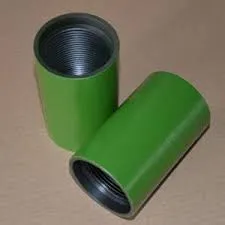- Afrikaans
- Albanian
- Amharic
- Arabic
- Armenian
- Azerbaijani
- Basque
- Belarusian
- Bengali
- Bosnian
- Bulgarian
- Catalan
- Cebuano
- Corsican
- Croatian
- Czech
- Danish
- Dutch
- English
- Esperanto
- Estonian
- Finnish
- French
- Frisian
- Galician
- Georgian
- German
- Greek
- Gujarati
- Haitian Creole
- hausa
- hawaiian
- Hebrew
- Hindi
- Miao
- Hungarian
- Icelandic
- igbo
- Indonesian
- irish
- Italian
- Japanese
- Javanese
- Kannada
- kazakh
- Khmer
- Rwandese
- Korean
- Kurdish
- Kyrgyz
- Lao
- Latin
- Latvian
- Lithuanian
- Luxembourgish
- Macedonian
- Malgashi
- Malay
- Malayalam
- Maltese
- Maori
- Marathi
- Mongolian
- Myanmar
- Nepali
- Norwegian
- Norwegian
- Occitan
- Pashto
- Persian
- Polish
- Portuguese
- Punjabi
- Romanian
- Russian
- Samoan
- Scottish Gaelic
- Serbian
- Sesotho
- Shona
- Sindhi
- Sinhala
- Slovak
- Slovenian
- Somali
- Spanish
- Sundanese
- Swahili
- Swedish
- Tagalog
- Tajik
- Tamil
- Tatar
- Telugu
- Thai
- Turkish
- Turkmen
- Ukrainian
- Urdu
- Uighur
- Uzbek
- Vietnamese
- Welsh
- Bantu
- Yiddish
- Yoruba
- Zulu
Comparing Bull Plug and Hex Plug Differences and Applications in Various Industries
Bull Plug vs. Hex Plug A Comparative Analysis
When it comes to plumbing and mechanical components, connectors play a crucial role in ensuring the integrity and functionality of systems. Among the various types of plugs used in these systems, bull plugs and hex plugs stand out due to their distinctive designs and applications. Understanding their differences, advantages, and typical uses is essential for professionals and hobbyists alike.
Bull Plug
A bull plug, also known as a bull-nose plug, is typically characterized by its rounded end. This design allows for easy insertion into various sockets or fittings. Bull plugs are primarily used in applications where a secure seal is required but where the plug may need to be frequently removed or replaced. The rounded shape minimizes friction and wear, making it less likely to become stuck in the fitting.
One of the key advantages of bull plugs is their versatility. They are often used in pneumatic systems, water pipes, and even in automotive applications. Their design also lends itself well to environments where space is restricted, as the rounded contours can navigate tight spaces more easily compared to more angular shapes. Moreover, bull plugs usually have a wider variety of materials and sizes available, allowing for customization to specific needs.
However, the bull plug's design does have its limitations. The absence of angular features means that torque application is less efficient. This can be a downside in applications requiring a robust tightening mechanism to manage high pressures. Additionally, the softer edges may not offer the same structural integrity under extreme conditions compared to hex plugs.
Hex Plug
bull plug vs hex plug

In contrast, hex plugs feature a hexagonal shape that allows for easy gripping with tools like wrenches. This design provides a significant advantage when it comes to applying higher torque, making hex plugs particularly suitable for high-pressure applications or where secure fastening is critical. They are commonly used in hydraulic systems, gas lines, and machinery where robust connections are essential.
The hexagonal design also means that hex plugs can be easily tightened or loosened, making maintenance simpler. Their geometry allows for a more substantial surface area for tool engagement, reducing the risk of slipping. Furthermore, hex plugs are generally more durable and can withstand harsher environmental conditions compared to their bull counterparts.
However, the bulkier shape of hex plugs can be less versatile in tight spaces. They often require more clearance than bull plugs, which can be a disadvantage in compact configurations. Additionally, their installation may become cumbersome in areas with limited access, requiring more specialized tools.
Conclusion
The choice between bull plugs and hex plugs ultimately depends on the specific requirements of the application. Bull plugs offer flexibility and ease of use, making them ideal for low-pressure situations and confined spaces. In contrast, hex plugs provide strength and reliability for high-pressure systems, where secure fastening is paramount.
Understanding the distinct characteristics of each type of plug can lead to better decision-making, ensuring that mechanical and plumbing systems operate efficiently and effectively. Ultimately, the right choice will enhance the functionality of the system, prevent leaks, and improve overall user satisfaction. When selecting a plug type, it's essential to consider both the environmental conditions and the mechanical demands of the application to achieve optimal performance.
-
Tubing Pup Joints: Essential Components for Oil and Gas OperationsNewsJul.10,2025
-
Pup Joints: Essential Components for Reliable Drilling OperationsNewsJul.10,2025
-
Pipe Couplings: Connecting Your World EfficientlyNewsJul.10,2025
-
Mastering Oilfield Operations with Quality Tubing and CasingNewsJul.10,2025
-
High-Quality Casing Couplings for Every NeedNewsJul.10,2025
-
Boost Your Drilling Efficiency with Premium Crossover Tools & Seating NipplesNewsJul.10,2025







